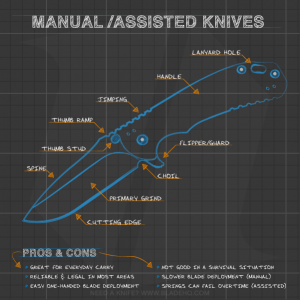There are quite a few companies that make excellent spring assisted knives, but the company on our mind today is SOG Knives. They have a sizable offering of assisted knives in enough configurations that there’s certain to be something for everyone. Here’s a rundown of their models:
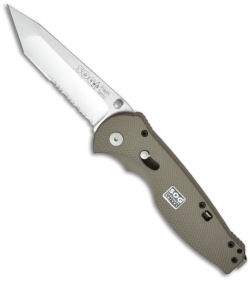 SOG Flash Series : The Flash comes in two sizes. The small size (the Flash I) has a blade length of 2.5″ and the larger model (the Flash II has a blade length of 3.5″. The Flash series knives come with a ton of great options including aluminum or Zytel handles, plain or serrated blades, and numerous blade coatings.
SOG Flash Series : The Flash comes in two sizes. The small size (the Flash I) has a blade length of 2.5″ and the larger model (the Flash II has a blade length of 3.5″. The Flash series knives come with a ton of great options including aluminum or Zytel handles, plain or serrated blades, and numerous blade coatings.
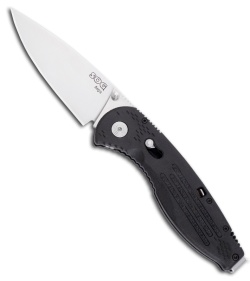 SOG Aegis Series: Like the Flash the Aegis comes in two sizes. The small Aegis has a 3″ blade and the larger Aegis has a blade length of 3.5″. Options abound with drop point and tanto blades and various color configurations.
SOG Aegis Series: Like the Flash the Aegis comes in two sizes. The small Aegis has a 3″ blade and the larger Aegis has a blade length of 3.5″. Options abound with drop point and tanto blades and various color configurations.
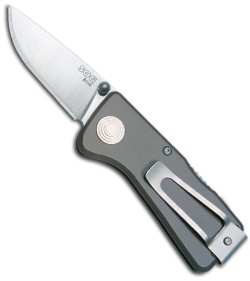 SOG Blink Series: This is an older series, but it’s shape makes it stand out. With a 2.5″ blade this assisted knife is smaller, but still very versatile.
SOG Blink Series: This is an older series, but it’s shape makes it stand out. With a 2.5″ blade this assisted knife is smaller, but still very versatile.
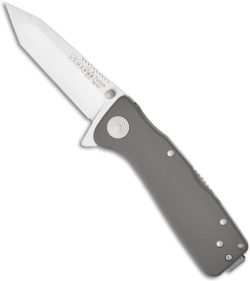 SOG Twitch Series: Like the Blink series this is an older model. There are currently three different sizes of the Twitch floating around (or twitching around). The small model (Twitch I) has a 2″ blade, the medium model (the Twitch II) has a 2.68″ blade and the large model (the Twitch XL) has a 3.25″ blade.
SOG Twitch Series: Like the Blink series this is an older model. There are currently three different sizes of the Twitch floating around (or twitching around). The small model (Twitch I) has a 2″ blade, the medium model (the Twitch II) has a 2.68″ blade and the large model (the Twitch XL) has a 3.25″ blade.
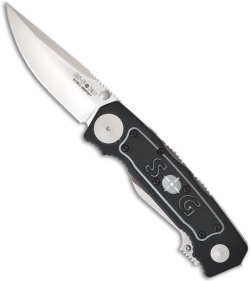 SOG BiPolar Series: If you’re looking for something with two blades then SOG has just the thing. The BiPolar models come with two assisted blade and they are available in three different configurations.
SOG BiPolar Series: If you’re looking for something with two blades then SOG has just the thing. The BiPolar models come with two assisted blade and they are available in three different configurations.
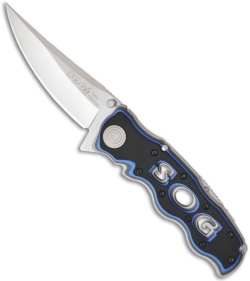 SOG Meridian Series: With it’s unique the Meridian is all SOG. Thee styles are available and the knife has a 3.25″ blade.
SOG Meridian Series: With it’s unique the Meridian is all SOG. Thee styles are available and the knife has a 3.25″ blade.
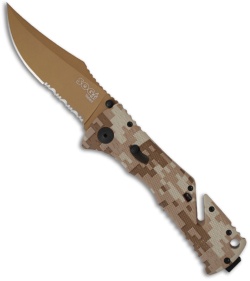 SOG Trident Series: The Trident series is one of SOG’s larger knives. With a 3.75″ blade the knife can handle any task and then some. There is now a mini version with a 3.15″ blade (still large for a “mini” version). Like most of SOG’s other models the Trident is available with different blade styles and comes in multiple color variations.
SOG Trident Series: The Trident series is one of SOG’s larger knives. With a 3.75″ blade the knife can handle any task and then some. There is now a mini version with a 3.15″ blade (still large for a “mini” version). Like most of SOG’s other models the Trident is available with different blade styles and comes in multiple color variations.
As previously mentioned there are numerous other companies who manufacturer excellent Spring assisted knives (Kershaw Knives, Benchmade Knives and Buck Knives, to name a few). But we dont’ feel like SOG gets enough credit for their outstanding Sprig assisted knife line so we wanted to put a little focus on them.
And good news SOG fans: BladeHQ.com has slashed prices on all your favorite SOG products making them even more affordable. Check out SOG Knives on BladeHQ.com today!
Posted by SAK, October 28, 2011

